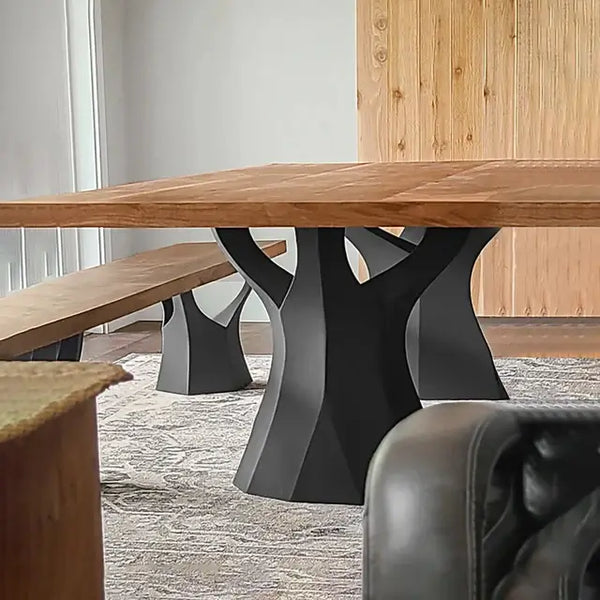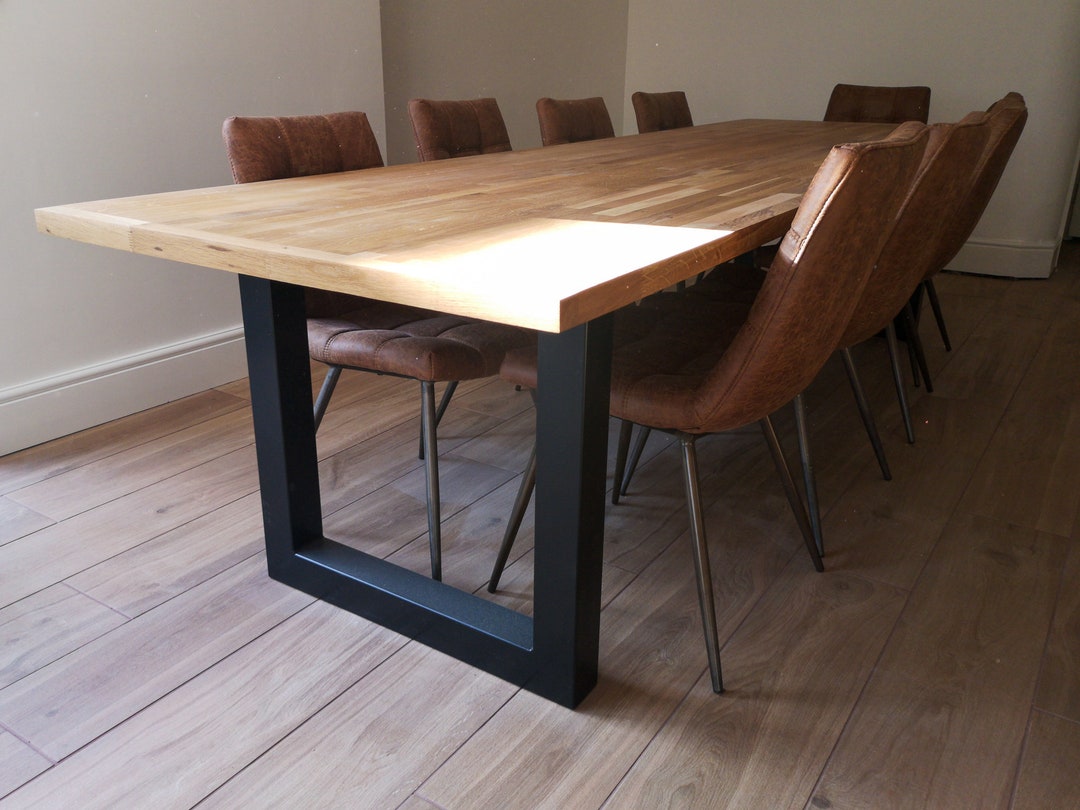Why Dining Room Table Legs Are Crucial for Your Table’s Stability
Why Dining Room Table Legs Are Crucial for Your Table’s Stability
Blog Article
Specialist Tips for Setting Up Dining Area Table Legs for Optimum Stability
When it comes to setting up dining room table legs, achieving optimum stability is extremely important for both performance and looks. What specific methods can boost stability even further?
Select the Right Legs
When picking the appropriate legs for your dining-room table, it is vital to take into consideration both capability and visual appeals. The legs you select will substantially influence the general style and security of the table. Review the table's planned usage; if you anticipate frequent celebrations, sturdier legs, such as those made from strong wood or metal, may be extra appropriate, as they supply raised resilience and assistance.
Next, think about the elevation and design of the legs in regard to the tabletop. Conventional table normally range from 28 to 30 inches in height, so make sure the legs line up with this standard for comfort. The design of the legs must complement the design of the table top-- whether it be contemporary, rustic, or standard. For example, conical legs can include a modern touch, while transformed legs might communicate a more timeless aesthetic.

Select Appropriate Hardware
Exactly how can the best hardware enhance the security and durability of your dining-room table? The selection of suitable hardware is important to making sure that the legs of your table are firmly attached and able to stand up to routine use. Top notch screws, bolts, and brackets give the essential strength to sustain the weight of the table, along with any kind of additional tons positioned upon it during dishes or gatherings.
When picking screws, choose those made from sturdy products such as stainless-steel or brass, which resist corrosion and keep honesty in time. The size of the screws is just as essential; they need to pass through deeply into the table's structure without compromising integrity. For bolted connections, take into consideration making use of lock washing machines to avoid loosening up because of vibration or movement.
Furthermore, using edge brackets can include added assistance, particularly for bigger tables or those with heavier tops. These brackets distribute weight evenly and aid preserve the table's form. Making certain that the equipment you choose is suitable for the certain products of your table will better boost its overall security and long life, permitting you to enjoy your eating experience for years to come.
Ensure Proper Placement
Correct positioning of dining-room table legs is important for both visual allure and functional security. Misaligned legs can cause an irregular tabletop, which may not only be visually unattractive but additionally jeopardize the table's usability. To attain ideal placement, start by gauging the distance from the table's edges to the leg attachment points. This makes certain that each leg is positioned equidistant from the edges, creating a well balanced appearance.
Use a level throughout setup to validate that each leg is perpendicular to the table top. It is recommended to note the preferred leg positions on the underside of the table over here with a pencil or masking tape prior to protecting them.
Furthermore, confirm the positioning after the first screws are tightened up, as adjustments may be required before completely protecting the hardware. By focusing on appropriate positioning, you not only enhance the table's total style yet additionally make sure that it remains functional and stable for several years ahead.

Take Into Consideration Weight Circulation
After ensuring appropriate positioning of the dining-room table legs, it is very important to consider weight distribution to improve stability and functionality. dining room table legs. Appropriate weight distribution is essential in protecting against tottering and guaranteeing that the table can support its intended lots without risk of tipping or breaking down
When positioning the legs, ensure they are positioned at equivalent distances from the facility of the table to uniformly disperse the weight across the framework. Think about the weight of the table top and any type of products that will regularly hinge on it, such as tabletop home appliances or ornamental pieces. Tables with heavier surfaces should preferably have legs positioned closer to the corners, as this optimizes the base of assistance and minimizes the danger of instability.
Furthermore, if the table is meant for usage in a high-traffic area, take into consideration using larger products for the legs or including stabilizing elements, such as cross-bracing or a lower shelf - dining room table legs. These adjustments can help preserve balance and protect against changing during use. Ultimately, a well-considered weight circulation method will substantially boost the table's overall Check Out Your URL efficiency, guaranteeing it continues to be a useful and eye-catching focal point for your dining room
Examination Security Prior To Use
Evaluating the security of the dining-room table before use is an important action that ought to not be neglected. Guaranteeing that the table is secure and safe and secure can protect against accidents and lengthen the lifespan of the furniture. Begin by using gentle pressure to various factors on the table surface area. Lower on the facility and after that along the edges, moving or observing any wobbling. Recognize the legs or joints that might need modification. if the table shows instability.
Next, check that all fasteners and screws are tightened up correctly. Loosened connections can bring about instability and possible damage with time. If required, use timber glue on joints to enhance description security, making sure to allow adequate drying out time.

Final Thought
In final thought, the installment of eating area table legs calls for mindful consideration of materials, weight, hardware, and alignment circulation to achieve optimum security. By selecting premium bolts and tough legs, making certain exact alignment, and distributing weight evenly, the architectural integrity of the table can be considerably boosted. Performing a security test prior to normal usage further makes certain that the table will withstand daily pressures, consequently giving a dependable and secure eating experience.
When it comes to installing eating area table legs, attaining optimum stability is critical for both capability and appearances. The legs you select will substantially affect the total layout and security of the table (dining room table legs). Standard eating tables commonly range from 28 to 30 inches in height, so make certain the legs line up with this criterion for comfort.Appropriate positioning of dining room table legs is essential for both visual allure and practical security.In conclusion, the installment of dining area table legs requires careful consideration of products, hardware, weight, and placement distribution to achieve maximum security
Report this page